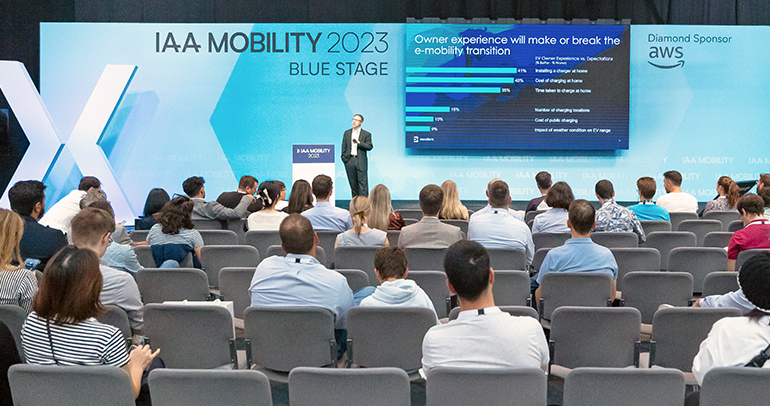
 Editor’s Note: There has been a tectonic shift in the technology industry’s approach to Customer Success. SaaS companies in particular witnessed explosive growth when the pandemic hit and the world went hybrid/remote, followed by a slower period in the last six months which has created scaling issues around capacity management, resource allocation, and more. Escalent sat down with 20 Customer Success leaders from global tech firms to understand the most pressing issues facing Customer Success organizations today and what leaders need to keep top of mind to thrive. This is the first blog post of a multi-part series.
Editor’s Note: There has been a tectonic shift in the technology industry’s approach to Customer Success. SaaS companies in particular witnessed explosive growth when the pandemic hit and the world went hybrid/remote, followed by a slower period in the last six months which has created scaling issues around capacity management, resource allocation, and more. Escalent sat down with 20 Customer Success leaders from global tech firms to understand the most pressing issues facing Customer Success organizations today and what leaders need to keep top of mind to thrive. This is the first blog post of a multi-part series.
Effective Customer Success Strategy Sets a North Star
“Best-in-breed has a clear idea of what Customer Success is there to do.” —Eanna Cunnane, Head of Workspace Professional Services, Google Cloud Consulting
The North Star has been used for millennia by travelers as a guiding light that keeps them on the right path. For business leaders, a clear charter serves the same purpose—laying out a direction that doesn’t get lost amid day-to-day realities. For a leader to rally an organization behind a shared vision, your plan needs to include the mission, goals, plus roles and responsibilities that align with this overall vision.
The same is true for powerful, strategic Customer Success organizations—they don’t happen by accident; they are purpose-built with a clear charter and are executed with unfailing focus. The Customer Success function evolved rapidly over the past decade in both scale and complexity without consensus about what the proper role for the function should be. The scope of responsibilities Customer Success teams have undertaken are often driven by organizational and environmental circumstances, for example the maturity of the product and economic or competitive factors that change over time. In this fast-paced and constantly evolving environment, defining your organization’s charter for Customer Success is not a check-the-box exercise that you can file and forget; it is the creation of a living document that defines why, the very purpose behind their existence. As a living document, it must evolve to align with the most current needs and constraints.
Healthy Customer Success Organizations Have a Clearly-Defined Approach
“Change the mantra about what (Customer Success) responsibilities are. Create a vision of what the company will look like and understand it is going to change.” —SaaS Chief Customer Officer and Advisory Board Member
Over the years, we have heard several versions of how different organizations approach the Customer Success function—from being a variant of customer service, technical support, technical account management, to “everything after sales.” Customer Success leaders are often then left with the unenviable task of addressing many unclear and sometimes divergent priorities as the “trusted advisor” on the frontline. This lack of clarity often results in chaos for the Customer Success organization, and, without a North Star as a guide, it is easy to get lost.
Our expert panel agrees that there is an urgent need to create order out of this chaos. As the pandemic-fueled demand surge cools off, businesses are looking for ways to endure macroeconomic headwinds in a difficult 2023. Consequently, what used to be a genuine attempt by SaaS providers to deliver long-term customer value and partnership is now a struggle with the realities of revenue goals that can be at odds with Customer Success teams being the true champion of the customer. These conflicting priorities can lead to organizational confusion, especially where there are overlapping activities with adjacent functions without clear boundaries and ownership.
Well-Defined Swim Lanes for Client Ownership Are a Customer Success Must
“Customer Success is highly contextual. So, what it means in one company is often completely different from another one.” —Rav Dhaliwal, Investor, Board Member, Venture & Limited Partner at Crane Venture Partners
Charters for Customer Success over the years have aimed to balance three key company priorities—adoption, retention, and expansion. Depending on the product’s maturity and the organization’s market presence, the mix of these three objectives may be balanced differently, but the general consensus is to weight Customer Success team metrics toward company goals of revenue retention and expansion. As expected, this results in confusion about client ownership and the relationship between sales and Customer Success teams and creates a quandary about how to create an incentive program that appropriately rewards the right behaviors for Customer Success.
Customer Success Leaders Find the Sweet Spot Between Customer-Facing and Internal Motivations
“Have some measure of shared objectives or KPIs across teams. When teams are operating under their own success metrics, you get a broken customer journey.” —Eanna Cunnane
Most for-profit companies prioritize growth, tracked against revenue and bottom-line performance, but often fail to celebrate in the same way the (perceived) lesser important goals of client satisfaction and customer engagement. This presents a problem as renewals are a lagging indicator of the health of your relationship with customers. At the point of renewal, it is often too late to rectify issues that unfortunately are often unseen in the relationship. There is a pressing need to focus on leading indicators of customer health with a direct link to the achievement of company financial goals (i.e., customer retention and expansion). Customer Success leaders are rightly motivated to include these customer-focused goals in their charter to gain well-earned recognition of their importance and convey their strategic relevance to achieving financial outcomes for the organization.
Customer Success leaders tell us the primary role of their team is to enable customers who have put their faith in a shiny new piece of tech to achieve their objectives, realize the value expected from their investment, and build partnerships that endure over time. Customers may not care about your expansion goals, but they are often willing to be educated on ways to increase and improve their use of the product. Effective Customer Success leaders have figured out the sweet spot between customer-facing and internal motivations. This involves articulating a well-defined mission, clear rules of engagement with other teams, and holistic customer-centered goals. There must be recognition that the Customer Success function is much more complex and strategically critical than it may appear on the surface and as such requires its own North Star for guidance on its journey.
Outstanding Customer Success Management Gets a Seat at the Table
“Who is the commercial owner of the customer after you close the deal with them? I’m so surprised how many people, even companies that make tens if not hundreds of millions of dollars, struggle to answer that question.” —Rav Dhaliwal
As demand continues to be impacted by the macroeconomic headwinds against the Tech industry, with once-approved budgets getting slashed, being able to retain existing business will be critical for survival. While sales teams continue to knock on doors and chase new growth, the onus of building deeper relationships and locking in customer spending increasingly rests on Customer Success teams. Particularly in this challenging environment, Customer Success leaders have an opportunity to rethink and expand their charter, increasing their contribution to the business and building a compelling case for a seat alongside sales and marketing at the executive planning table.
How are you seeing the strategic role of your Customer Success team evolve in your organization? Have you seen models that work better than others? How has your Customer Success function balanced efforts between retention/adoption vs. expansion goals? And, importantly, what customer-focused goals is your Customer Success function responsible for?
If you would like to be part of this ongoing research series with our Customer Success practice, connect with us below. In the meantime, look for our next installment where we do a deeper dive into the critical role Customer Success plays.








